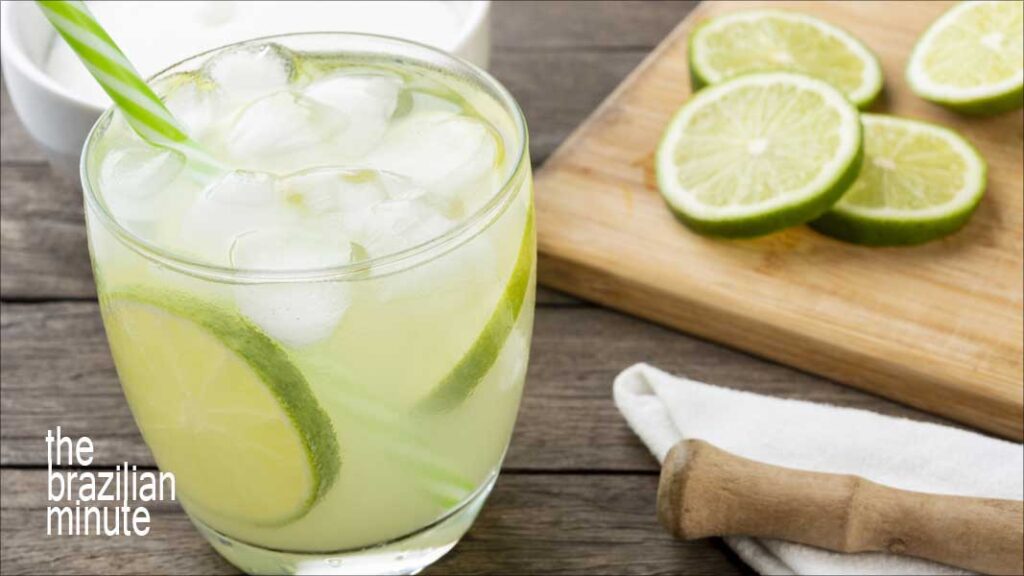
Your Guide To Understanding And Appreciating This Unique Brazilian Spirit.
Brazil’s cachaça explained. How one of the New World’s oldest spirits inspired Brazil’s celebrated national drink and why it’s exclusive to Brazil.
This series was presented by the Consulate-General of Brazil in Chicago and the Brazilian Foreign Ministry’s Cultural Department.
In celebration of Brazil’s Bicentennial year, 1822 – 2022
This week’s Brazilian Minute: Brazil’s Cachaça Explained
(Audio not available)
Catch up with other Brazilian Minute episodes you may have missed!
Script from Audio:
Most countries have a signature spirit: Ireland and Scotland have their whiskeys. France and Italy, their wines. Brazil has its own entry. A clear, fragrant rum distilled from sugarcane. It’s called cachaça.
Soon after, plantation owners discovered sugarcane, saloon keepers made a discovery of their own. Distilled sugarcane gives up a potent libation, guaranteed to ward off Brazil’s ever-present heat and humidity.
When mixed with fresh limes, sugar, and ice, cachaça takes on a different name: Caipirinha.
You’ll find cachaça at Carnaval or as a prayer offering to the spirit Gods of Candomblé. It’s popular with the rich, the poor, and especially, the tourists.
If there’s a travel story to be shared, cachaça surely must have been involved. Celebrate National Cachaça Day on September 13th.
Read and listen to new weekly episodes of The Brazilian Minute.

More on: Brazil’s Cachaça Explained
Overview:
Cachaça is Brazil’s trademark spirit. However, before we get started, here’s how to pronounce it: kah SHAH-sah. Cachaça.
Brazil’s Cachaça Explained
First, cachaça is one of the oldest spirits in the Americas It predates most New World spirits by decades. The first cachaça was produced in São Vincente in the early 1500s.
Portugal’s development of its newly founded colony included sugar production. Importantly, the industry was relocated from the Madeira Islands to the Brazilian land. The large pot stills used in sugar processing were moved, too.
It is said that in 1532, colonists landed with the first sugarcane cuttings from Madeira. Surprisingly, they discovered that the discarded leavings fermented into alcohol naturally.
Cachaça is a rum made from sugarcane. Importantly, while most rums are also made from sugarcane, the process is remarkably different. Most rums begin with molasses, the boiled, syrupy byproduct of crushed sugarcane.
Cachaça begins with slow-pressed juice from fresh-cut sugarcane stalks. Secondly, yeast is added to transform the sugarcane juice into alcohol so it can be distilled in copper pots.
Finally, the cachaça is aged in large wooden barrels. These barrels are often made from a variety of Brazilian woods to infuse subtle flavor and character into the spirit.
By law, cachaça can only be made in Brazil, and it must be made from Brazilian-grown sugarcane.
Cachaça is distilled in large batch facilities or by small-batch producers, throughout the country. Importantly, Quality can vary, and many small-batch distilleries deliver cachaça that is superior to their larger corporate competitors.
National Cachaça Day
National Cachaça Day is celebrated in Brazil on September 13th. Its creation goes back to 2009 when IBRAC (The Brazilian Institute of Cachaça) submitted the idea to the Federal government.
The date was selected to honor the spirit’s official licensing for sale on September 13, 1661. Why did it take so long?
Curiously, it was due to the Portuguese Empire. It prohibited the production of cachaça in favor of bagaciera, a typical Portuguese brandy.
Ultimately, thirsty Brazilians protested, and the ‘Revolta da Cachaça’ quickly led to legalization and happy sippers.
Cachaça is also called pinga. Or mata-bicho, parati, and our favorite, “água que passarinho não bebe”. Translated, it means “water that the bird won’t drink”.
Colloquially, pinga may refer to cheap, lower-quality cachaça. Which – sometimes – is exactly what you need.
Brazil’s National Drink
There are literally hundreds of recipes for turning cachaça into something truly sip-worthy. Interestingly, the most popular is Brazil’s national drink, the celebrated caipirinha (pronounced kai-peer-EEN-ya).
Tart and sweet, the caipirinha mixes cachaça with ice, sugar, and limes for an unforgettable and distinctive cocktail experience.
- Get our Master’s class recipe for the perfect caipirinha.
- 5 ‘Can’t Miss’ Ways To Celebrate National Cachaça Day
It wasn’t too long ago that cachaça was difficult to find. Happily, those days are behind us.
Nowadays, cachaça is stocked in most fine liquor stores. Cachaça is also available for home delivery. And need we say it? Caipirinhas are almost a prerequisite for your table at Brazilian restaurants coast to coast.
Saude! (Cheers!)
Music, Travel, Friends, and Fun! 2022 marks Connect Brazil’s 25th year.
Brazil’s Cachaça Explained
Did you enjoy ’Brazil’s Cachaça Explained’? If you did, why not join us at Connect Brazil?
Sign up for our emails on Brazilian music, travel, friends, and fun. Listen to our ‘always live’ streaming station and streaming music channels, always free. Visit us on Facebook, and Twitter, and browse our Lifestyle Directory for Brazilian events coast to coast.










